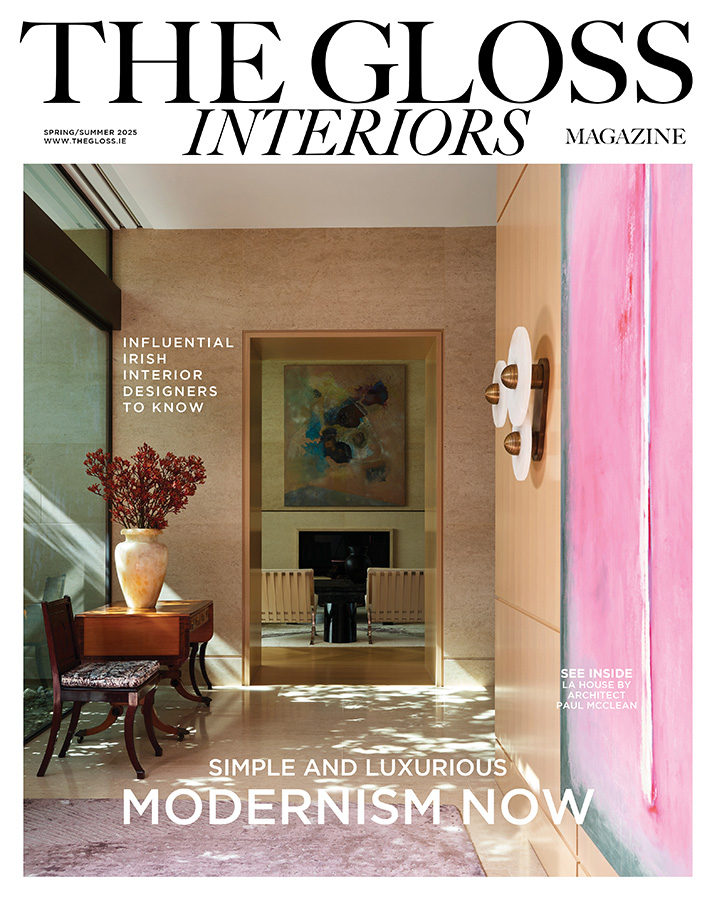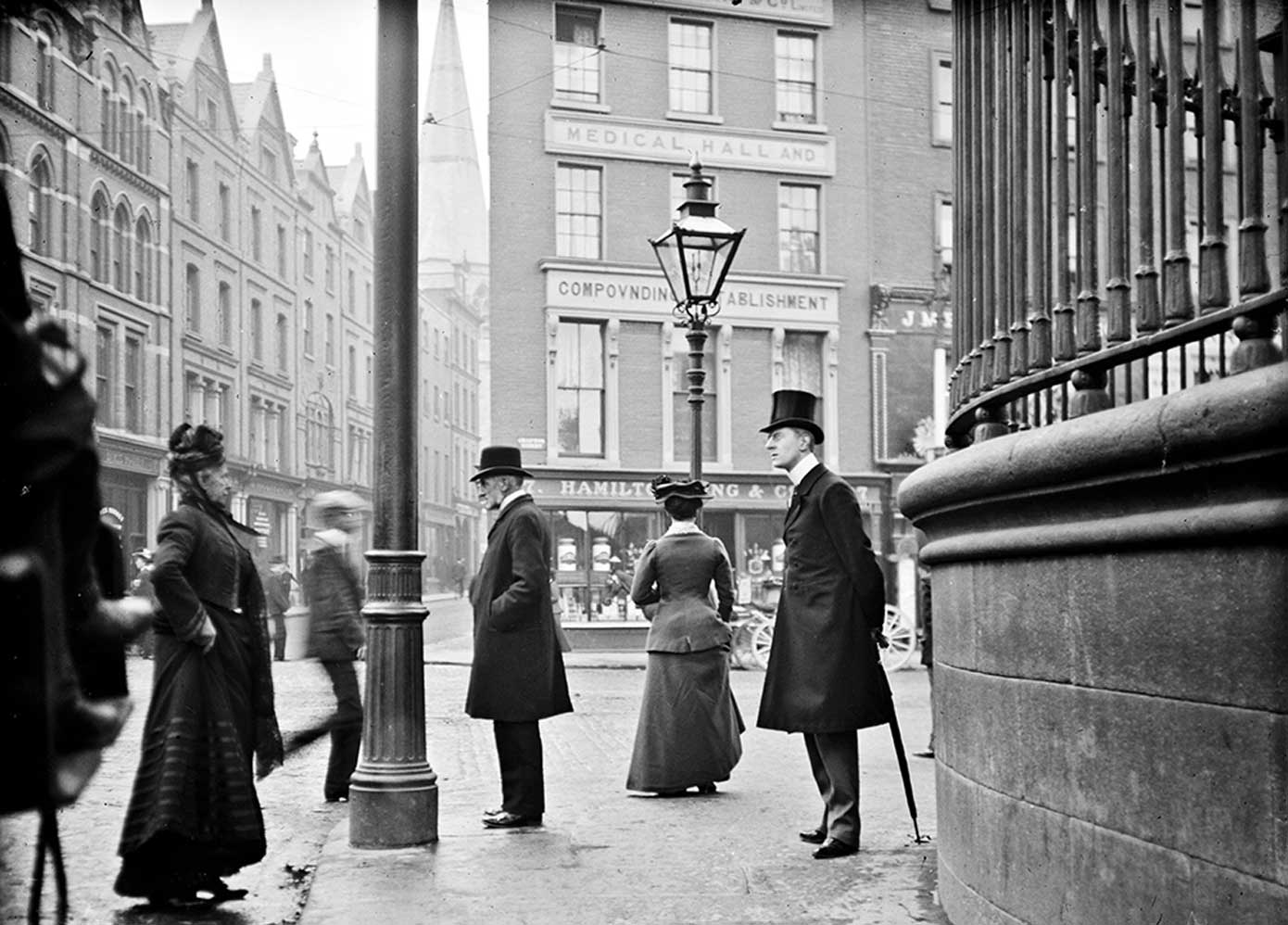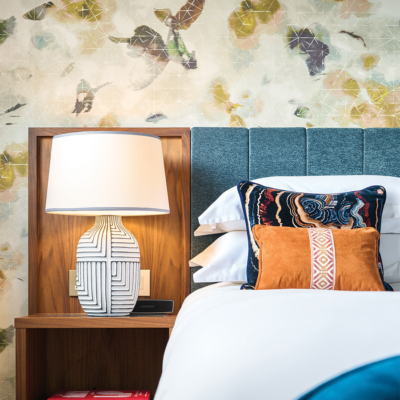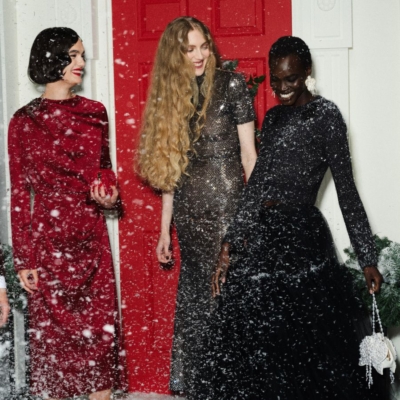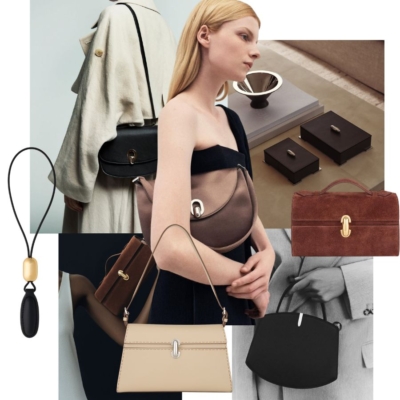In the late 19th and early 20th centuries, Irish women displayed a fierce entrepreneurial streak as they established businesses, made a living and carved out independent lives. Historian ANTONIA HART, the first to research Irish women in business during the period from the 19th century to independence, found that hardworking, creative female role models are not unique to modern life …
Heading into town for a few bits, 1894-style? You might catch a tram to Dublin city centre, alighting at Nelson’s Pillar (one day to be the site of the Spire) into the cheerful clamour of Sackville Street, Ireland’s smartest and broadest shopping street. Strolling south, maybe stop at Foley’s to see how your new costume is shaping up, or at Dunckley’s to see if you can pull off (or, rather more problematically, lace up) one of the new long-line corsets. Cross the street to Butler’s Medical Hall, reinvented as a retail chemist where you can pick up a pretty birthday gift, along with your household medical supplies. Refresh yourself at the Mona Hotel on Eden Quay, turn up Marlborough Street to pick up cigarettes at O’Connor’s and a newspaper at Brennan’s, stop in at Sheridan’s of North Earl Street for the wine they bottle themselves. Before you know it, you’re back at the tram terminus. These businesses, and more alongside them, were run by women. This looped route was a 15-minute walk, and you’d have passed a woman’s business, on average, once every 30 seconds.
This illustrates just how visible women in business were, how normal it must have seemed, in busy 19th and early 20th-century Dublin, to find a woman in charge. It’s not how we typically think of Irish women of the period, and it’s not overstating to say it’s inspiring and invigorating to realise that our lineage includes this strong strand of female entrepreneurship. Irishwomen had European role models: they had only to look to France, and the magnificent Champagne widows. Nicole, Veuve Clicquot, widowed at 27, took over her husband’s business in the early 19th century; her name and face are essential to today’s Veuve Clicquot brand. Obviously, Ireland had no wine production, but there were distilleries up hill and down glen, and whiskey brands we order at the bar today, like Bushmills and Locke’s, were shaped by 19th-century female owners. Ellen Jane Corrigan introduced electricity to her plant at Bushmills, and carried home the only gold medal awarded for whiskey at the 1889 Paris Exhibition. In Kilbeggan, Mary Anne Locke opened the first retail counter at her distillery, and oversaw its greatest ever production increase.
Distilling was big business, and it’s noteworthy that some women were instrumental in it. But thousands of Irish women ran much more modest, everyday kinds of businesses. To do so, they had to find ways around social, legal and financial barriers. If you had to earn your own living, and meet ordinary obligations like paying rent, feeding your children, and providing for your elderly parents, you couldn’t necessarily be dealing with whether or not anyone else thought it was respectable for you to open a shop. You just came up with creative, practical solutions. Not everyone turned to business to provide for a family. In Limerick, young Kathleen Daly, barely out of her teens, saw business as a route to the independence she craved. Her dressmaking business became so successful that she had to move premises and employ more people. Even while planning to move to America and marry Tom Clarke, who would be a leader in the Easter Rising, she had to manage the business first. She was not prepared to disappoint her customers, desperate for new clothes:
“I can’t shut up all at once,” she wrote to Tom, explaining that there was a fête coming up, and “everyone tries to turn out very swell at a thing like it”. Her commercial agility was of endless use. When Tom lost his job, Kathleen used her savings to open an ice cream and candy shop; later, they farmed together in Long Island, getting “top price” for cauliflowers; back in Dublin, the couple had two tobacconist shops. After Tom’s execution in 1916, Kathleen opened another shop in D’Olier Street, managing it along with a political career and a young family.

You had to work with the skills or assets you had to hand, and sometimes this meant opening your home. It can’t have been easy, making a private home public, advertising for boarders, say, and going to sleep that first night while a stranger got undressed in the next room. Nor did running a hospitality business simply require ordinary domestic skills, scaled up. The fact that you could make supper for yourself or your children didn’t necessarily mean you could have a hot meal for six or eight adults ready to be served at the same time every evening, and while you might wash your family’s bedclothes whenever it was drying weather, boarders needed clean linen on their beds on a fixed day, regardless of rain. Thoughtless boarders walked mud across a mopped floor, and the fire-logs were green, but the house still had to be made clean and warm. Problematic tenants and unrecoverable rents were occupational hazards. Mary Casey, of James Street in Westport, a seasoned landlady in her seventies, had to resort to court proceedings to get rid of an aggravating boarder who just wouldn’t leave. But invoking the law required a level of confidence, both personal and financial, that not everyone possessed.
A woman who converted her home for business purposes might find that her neighbours held fixed opinions about it, and were anxious to express them. In Upper Gardiner Street, which in the 1880s was still largely, though not exclusively, residential, Ellen McGuinness’s neighbours were appalled at the prospect of a pawnbroker’s business polluting their smart street, considering that it would “seriously deteriorate” the value of the surrounding properties. The shop went ahead, and Ellen McGuinness was still running it 30 years later.
Residents of Dublin’s tranquil squares actively discouraged anything other than peaceful private residences. The inhabitants of Belgrave Square in Monkstown indulged in “worry and fuss and tutting” when two sisters established the immediately respectable Hall School for girls (now Rathdown School) in 1872; in Fitzwilliam Square in 1896, a combination of pearl-clutching and litigation resulted in Elizabeth Perry being prevented from transferring her successful medical boarding house from Harcourt Street to her new home at number 28, on the south side of the square.
It was useful for a boarding house to have a niche market. Elizabeth Perry accepted doctors’ references for a select crowd of the mildly unwell, including aristocrats and bishops, while across the river at Eden Quay, around the corner from the GPO, Emily Dalby specialised in theatrical boarders. In April 1916 she put up six members of the D’Oyly Carte Opera Company who had come to Dublin to perform Gilbert and Sullivan at the Gaiety. The singers unpacked costumes, scores, and personal belongings, settled in and rehearsed, with the four pianos Emily Dalby had hired from Piggott’s of Grafton Street. But before the show could open, the Rising erupted, and the comic opera singers rapidly realised that their temporary digs were at the heart of the action. Rebels occupied the roof of the boarding house over two days, until an order, yelled through a British Army megaphone, directed the occupants to leave. Mrs Dalby and the boarders did so, under crossfire, leaving behind a precious mixture of personal and professional belongings: opera hats, dinner jackets, tennis flannels, gold bracelets. Two of the boarders, at least, were unruffled enough by the experience to brave Dublin again the following Easter, where they gave a “conspicuously good” performance at the Gaiety. While it makes a colourful anecdote, the heartbreaking reality for Emily Dalby was that once her premises had emptied, the British Army promptly shelled it, and her livelihood burned to the ground.
So, among the many preoccupations for a businesswoman like Emily Dalby, financial concerns jostled for position with current events, social issues and politics. In 1922, experienced hotel manager Annie Farrington borrowed money to buy Barry’s Hotel in Great Denmark Street. During the Civil War, the Citizen Army occupied the hotel, having first chucked Farrington’s customers out, smashed her windows out (to avoid them being smashed in), and thrown up barricades of her “good tables and furniture”. Farrington was a passionate believer in the cause, but couldn’t help being distraught at the financial fallout. “I was half out of my mind thinking of all the money I owed the bank which financed the purchase of this hotel and I now saw the possibility of the whole place going up in smoke,” she said later.
Money was a constant worry. Businesswomen, especially those engaged in retail, often got goods from suppliers on credit, and then extended credit to their own customers in turn. The most eagle-eyed could fail to bridge the gap between black and red at times, and businesswomen borrowed cash from suppliers, family members, and friends, just to hold things together. In a sudden emergency there was always the pawnbroker’s shop, where any portable item could be converted to cash, with virtually no questions or paperwork. Pawnbroking was important to women on the other side of the counter, too – in 1894, 17 per cent of Dublin pawnbrokers were women. Like boarding house keepers, pawnbrokers carved niches. Margaret McNally promised privacy and discretion at the First-Class Pawn Office at 85 Marlborough Street, where customers came for cash advances not on shawls and kitchen chairs, but on a box of good cigars, a diamond necklace, and share certificates. The luxury end of pawnbroking turned her a tidy profit. 85 Marlborough Street is a pawnbroking business today, still signified by the same three golden balls.
Signage and shopfronts are physical reminders of the businesswomen populating our past. Entrepreneurship may not be the first thing that occurs when we think about our heritage, but it’s unmistakably there, and we are the beneficiaries of their work. These businesswomen are no longer able to tell their ordinary, extraordinary stories. But we can, and we should, over and over again.
Images: JOHN J CLARKE, C1897-1904 / COURTESY OF NATIONAL LIBRARY OF IRELAND
LOVETHEGLOSS.IE?
Sign up to our MAILING LIST now for a roundup of the latest fashion, beauty, interiors and entertaining news from THE GLOSS MAGAZINE’s daily dispatches.




